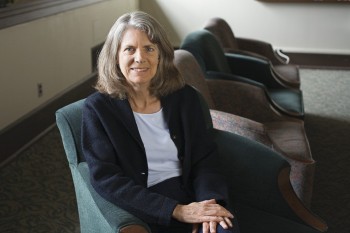ENDNOTE

Brown See larger image
Robot or sonnet? The power of creativity for the student and the university
The last two decades have seen a decided turn toward the arts in American colleges and universities. Creative writing programs have played a flagship role in this broadening of undergraduate education. Today there are more than 800 such programs in the U.S., and creative writing courses are offered on almost every college campus. At Cornell, such classes reach about 600 students a year from across the campus, who meet in small workshop courses where they have the opportunity to develop their abilities in the creation of fiction and poetry. We educators feel on our pulses the relevance of the arts to a successful and balanced undergraduate education. But we can also spell out the particular kinds of value that creative writing and the arts more broadly add to our fundamental teaching mission.
We might begin with the distinctiveness of the student experience. "Creative writing," it has been argued, "is one of the few formal opportunities in education for self-discovery and self-creation. It leads a student less to right answers than to right questions. It creates more intelligent, informed and responsible readers by immersing them in the actual process of imaginative exploration and accomplishment" (Dave Smith, in the essay "Notes on Responsibility and the Teaching of Creative Writing"). Note the insistence in this formulation on the social as well as the personal, the cognitive as well as the expressive, the intellectual as well as the affective dimensions of the process. Creative writing shares many of these features with the other creative and performing arts. Its specificity among the arts, then, lies in its complete reliance on language as a medium, with the result that, within this group, it is the art most likely to foreground formal, critical conceptualization.
But we can widen our perspective further. There is no absolute distinction between creativity in the arts and creativity in, say, engineering. Whether the outcome is a robot or a sonnet, the student ends up making something, solving compositional problems, bringing an object into being that did not exist before. Such making is itself an educational process; it is a form of understanding; it is a distinctive way of coming to know the world and one's place in it. This is not quite the same as the mastery of disciplinary knowledge, even in those fields that especially emphasize an open, inquisitive stance. Having said that, however, we need to recognize that such differences are in no respect absolute. Teachers in all disciplines know the importance of creativity to processes of discovery and the generation of knowledge. All areas of academic life require inventiveness, intuition, "a feeling" for the materials. In other words, the arts exist on a continuum with more conventionally analytical areas of inquiry -- a continuum in which every field combines the creative and the critical, albeit in differing proportions.
More broadly still, the arts tie the university, its students and its faculty to the local and larger community in which we find ourselves. Artistic performances -- readings and similar events in creative writing -- that draw participants from the nearby community, and the creative works that attract viewers, listeners and readers from near and far, enable the university to reach a vast and varied public in highly visible fashion. The arts, then, provide students with important examples of the life of academic work beyond the campus. For a university that has aspired since its founding to combine the liberal arts with a land-grant mission -- first to the state, then to the country, now to the world -- this is a powerful message and a worthy goal.
Laura Brown, the John Wendell Anderson Professor of English, is Cornell's vice provost for undergraduate education.